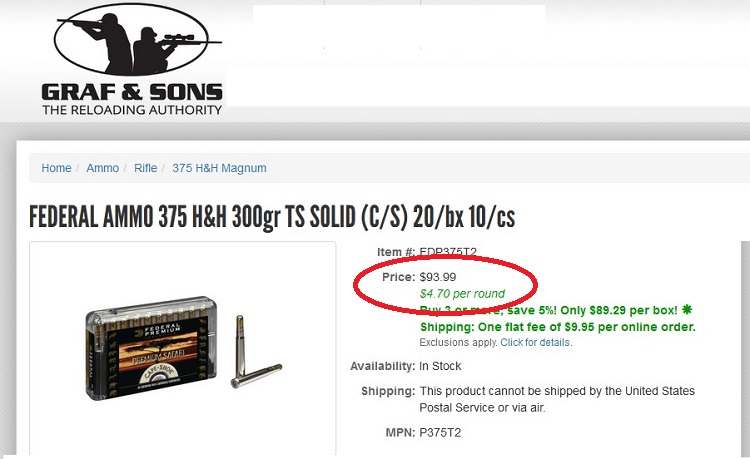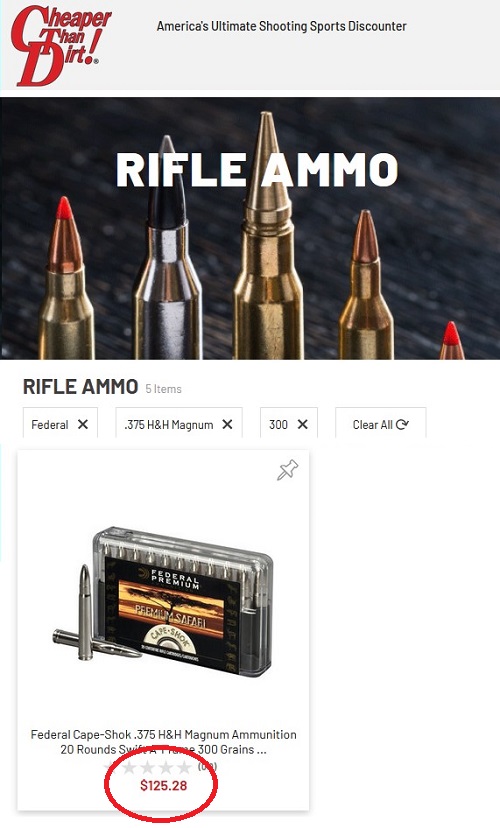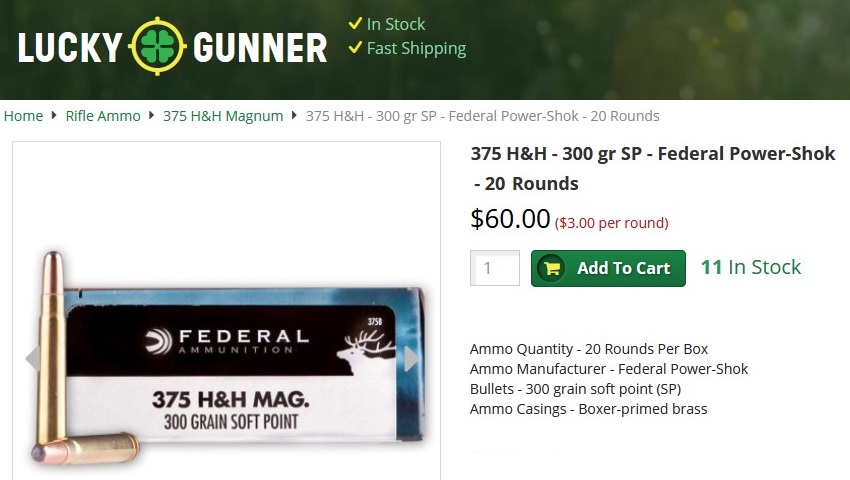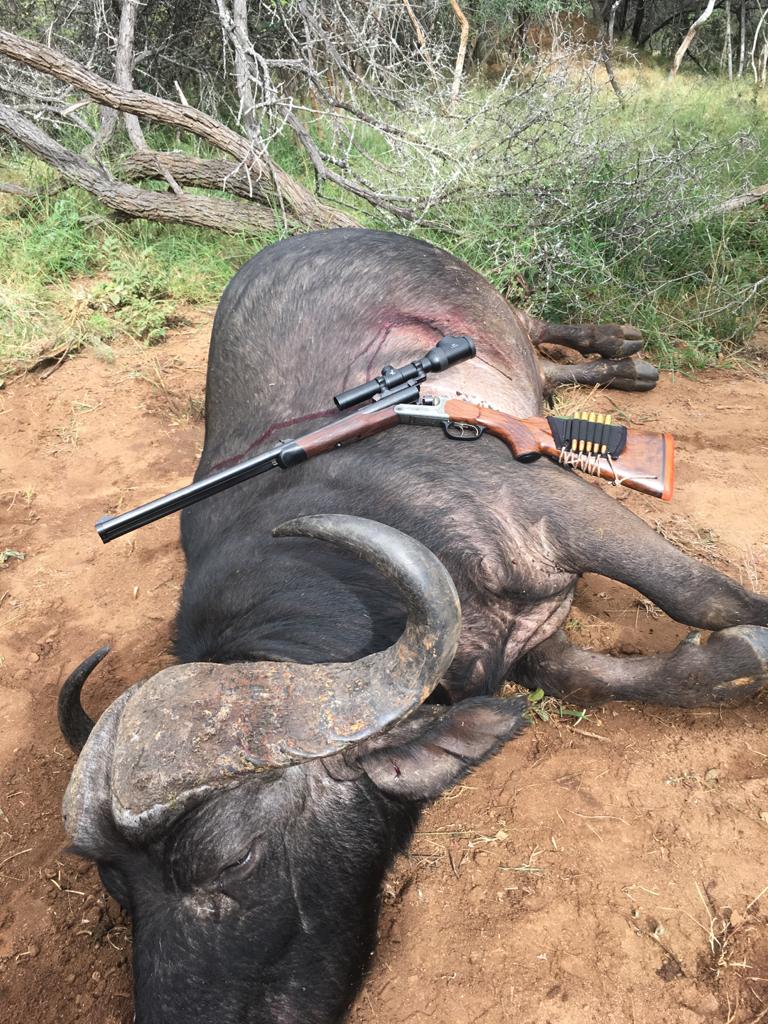In Comments about the .375 H&H cartridge, Fergie asks:
I wonder why the venerable .45-70 isn’t on the table for him? North American bison are heavyweights too, and .45-70 will handle them with aplomb even at range. I wouldn’t hesitate if offered a decent shot at that critter – a properly stoked cartridge with a hard cast 500 grain round nose from an elegant 1885 single shot would end the hunt nicely.
I’ve thought about that a lot myself (not owning a rifle chambered in .375 H&H, but owning the aforesaid 1885 High Wall rifle in .45-70 Govt).
I remember looking at the situation back when I was thinking of joining Mr. Free Market and Doc Russia on a South African safari, and basically I was told that the PH wouldn’t let you hunt Cape buffalo with the .45-70 Govt because it’s too underpowered. I bridled a little at that, and went looking around.
Here’s what the stats say about Buffalo Bore .45-70 Govt “Magnum” offerings:
Mono-Metal Flatnose: 380 gr. @ 2,075 fps / muzzle energy 3,632 ft-lbs
LBT-LFN: 430 gr. @ 1,925 fps / muzzle energy 3,537 ft-lbs
FMJ-Flatnose: 500 gr. @ 1,625 fps / muzzle energy 2,931 ft-lbs
Compare that to Buffalo Bore’s own .375 H&H Mag offering, which they call “Supercharged”:
SUPERCHARGED: 300 gr. Barnes TSX @ 2,550 fps / muzzle energy 4,330 ft lbs
Here’s the critical part, though. Most PHs recommend that the bullet arrives with no less than 3,000 ft-lbs at 100 yards.
At 100 yards, the .375 H&H Hornady DGS 300gr lands at 3,292 . The Buffalo Bore .45-70 Govt (or any manufacturer’s, for that matter)? Anywhere from 2,500 – 2,700 ft-lbs. Not nearly enough; those big, heavy ol’ boolets lose velocity too quickly.
More telling is the bullet’s ballistic coefficient (BC) / sectional density (SD) or, for a better definition, penetration power. (The higher the BC / SD, the better the penetration.)
At about 2,500 fps (which is at about 175 yards), the .375 H&H 300gr bullet has a BC of 480, and its SD is 305 (480/305).
At 1,900 fps (which is at the muzzle), the .45-70 Govt 300gr bullet has a BC of 185 and an SD of 204 (185/204).
In other words: if you were to shoot a Cape buffalo with the hottest-possible .45-70 Govt cartridge, you’d pretty much have to be in halitosis range to get the same result as you’d get with a .375 H&H cartridge at 100-150 yards.
And as Longtime Friend Combat Controller succinctly put it when we were discussing the topic last night: “If the .45-70 worked in Africa, they’d be using it. They don’t.”
Yup. In any safari camp, when you un-case your .375 H&H rifle, the PH will nod in approval. And especially so when it’s a CZ 550 Safari, a.k.a. the Brno 602.






